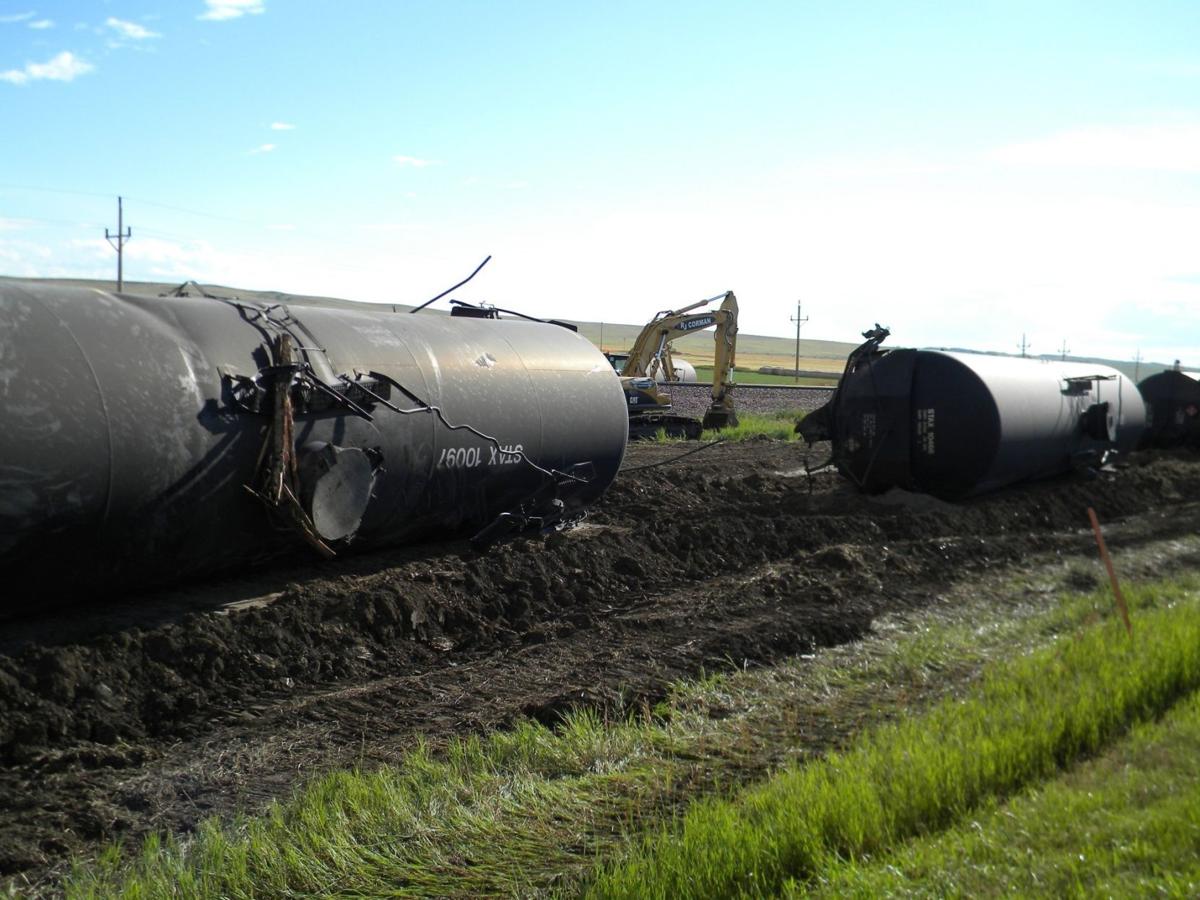Repost from the Billings Gazette
[Editor: Note the industry terminology: “BNSF attributes the July 16 incident…to ‘thermal misalignment,’ also known as sun kink, which occurs when rail tracks expand when heated and buckle.” …Will we see more of this with global warming? – RS]
Heat caused Montana train derailments, BNSF says
By Amy Dalrymple, Forum News Service, Nov 4, 2015
CULBERTSON — Two July train derailments in Eastern Montana, including one that spilled 35,000 gallons of Bakken crude, were caused by tracks that buckled in the heat, according to BNSF Railway.
BNSF attributes the July 16 incident that caused 22 oil tankers to derail east of Culbertson to “thermal misalignment,” also known as sun kink, which occurs when rail tracks expand when heated and buckle.
The company also attributes the same cause to the July 14 train derailment about 10 miles west of Culbertson, said BNSF spokesman Matthew Jones.
The Federal Railroad Administration said Tuesday the agency’s investigation into the derailments is still ongoing.
BNSF reported to the FRA that the two derailments caused $3.2 million in damage, including nearly $2 million in equipment damage and more than $1.2 million in track damage.
In the July 16 incident, a westbound train containing 106 crude oil tankers that had been loaded in Trenton, N.D., derailed about five miles east of Culbertson. Twenty-two tankers derailed, with five cars releasing oil, according to information submitted to the FRA.
BNSF and contractors recovered the spilled oil and removed and replaced about 3,900 cubic yards of contaminated soil, Jones said.
On July 14, nine cars on an eastbound mixed merchandise train derailed west of Culbertson, but the cars remained upright and did not cause a spill.
BNSF inspects tracks and bridges more frequently than required by the FRA, including visual inspections and inspections using rail cars equipped with advanced technology, Jones said.
Meanwhile, a legislative audit released last week highlights weaknesses in Montana’s oversight of rail safety, calling attention to a lack of emergency response resources in northeast Montana.
The report by the Montana Legislative Audit Division said the state’s rail safety inspection program is not adequate and first-responders are not adequately trained and equipped to respond to incidents involving hazardous materials.
Northeast Montana does not have a regional hazmat team, primarily due to a lack of hazmat trained and equipped firefighters and the lack of a full-time, salaried fire department, the report said. The closest hazmat team is in Billings, 300 miles from Culbertson.
When a new oil transloading facility in East Fairview, N.D., is at full capacity, Montana may see as many as 40 oil trains each week, the report said.
Montana’s Public Service Commission, which discussed the audit during a meeting Tuesday, would need statutory authority and resources from the state Legislature to expand its oversight of rail safety, said Eric Sell, a spokesman for the agency. Sell noted that the Federal Railroad Administration has primary oversight of rail safety.
BNSF train derailments that were caused by the tracks occurred at a rate of 0.38 incidents per million train miles last year, Jones said, noting the rate is 50 percent better than 10 years ago.
Another recent train derailment involving Bakken crude near Heimdal, N.D., remains under investigation by the National Transportation Safety Board. Six oil tankers derailed and four caught fire in May.



